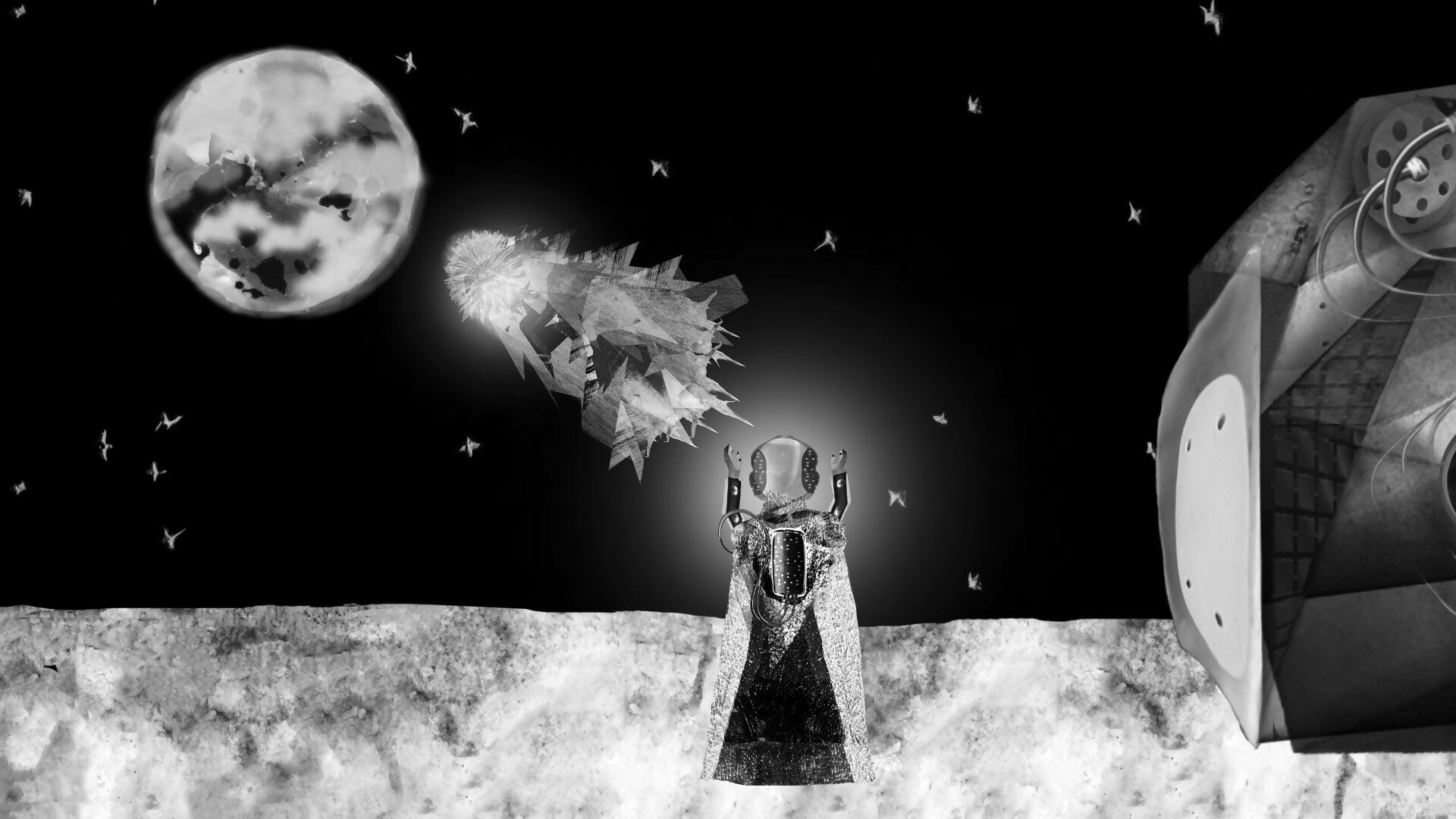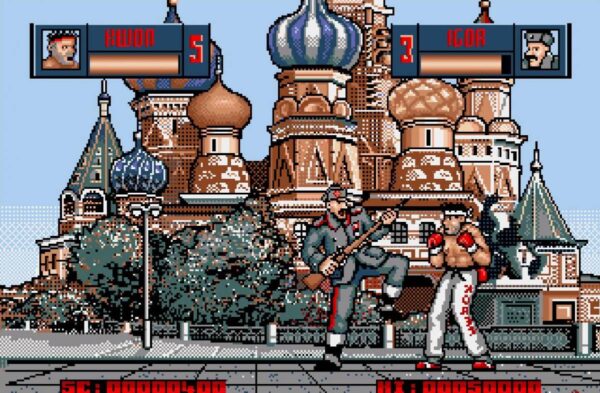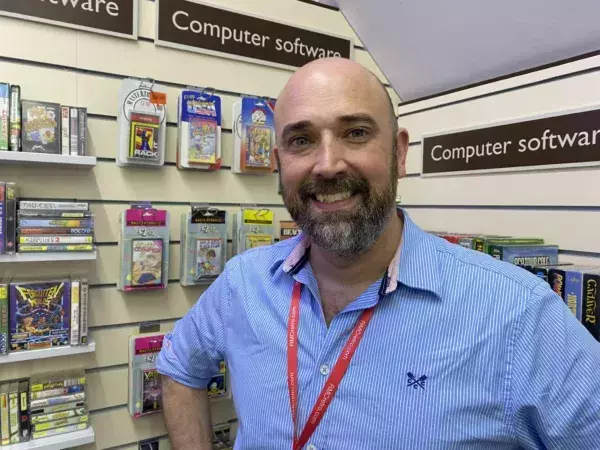
What’s queer about video games? In their book Video Games Have Always Been Queer, author Bonnie Ruberg contends: “Queerness and video games share a common ethos: the longing to imagine alternative ways of being and to make space within structures of power for resistance through play.”
A pejorative word in the 19th century, queer has been reclaimed by some members of the LGBTQA+ community as an umbrella term for people who are not cisgender and/or heterosexual. Today, there’s a thriving contemporary queer development scene which not only centres queer experience and identity through games, but also challenges player expectations through unusual game mechanics.
I’m queer myself. At a time when games journalism can be dominated by discussion of heteronormative, triple-A studio culture, it’s refreshing to turn to the queer games community for an alternative perspective on development. I was lucky enough to speak with three queer developers about how their personal experiences influence their work.
The personal is political
Perseids, or All This Will Go On Forever, is a Twine game made by Freya Campbell about four trans girlfriends going on a road trip. Campbell drew on her own memories of “road trips with friends, camping and trading jokes, discussing your hopes and fears for the future.”
This went beyond thematic inspiration, though; Campbell created a five-song soundtrack deliberately distorted to sound like it was filtered through a car speaker.
“It was a desire to capture a specific autobiographical moment,” says Campbell. “Summers spent driving in a 1996 Ford Fiesta in which half the speakers are blown, but you don’t care, and the distortion of the music only hammers home the fact that you’re in a car with your friends and probably on the way to do something fun. For the true experience, you should wind the window down and let your arm hang out in the breeze.”

Freya Campbell’s most recent queer slice-of-life game was called Superlunary, and appeared at the National Video Game Museum in 2019.
Perseids was created as part of the Trans Gal Jam, an event organised specifically for trans women. “I think it’s fantastic to have a space to allow trans women – and people who are still figuring themselves out – to make their own work, encourage each other, get advice,” Campbell says.
“Sometimes I think people who are new to creative work can feel like they need [permission] to create, especially when it’s creating something personal or against mainstream work; so having a space where people explicitly say, ‘You can make a game, and you can make it about people like you’ is great.”
Twine for something different
Since its launch in 2009, Twine, the open-source tool for creating interactive fiction, has become strongly associated with the queer games community. “I would say that queer developers are among the foremost pioneers in Twine,” agrees developer Sisi Jiang. “It’s impossible to explore the Twine landscape without encountering the work of queer developers. We’ve contributed to Twine as a medium as much as Twine has opened up new opportunities to us. The relationship between game developers and tool developers is a two-way street.”

“Perseids came from a few disparate elements slowly coming together into an idea, like ‘the crunch of tyres on loose gravel.’”
This last point is well demonstrated by the clever use of different coloured text in Jiang’s Twine game, LIONKILLER. In it, you play Hua Mulan, a lesbian who’s conscripted into the First Opium War against the British Empire in the mid-19th century.
“Accessibility was really important to me,” Jiang says. “One of my major criticisms of Twine games is that some of them trade legibility for artistic expression. The colour coding was a way to make sure that players were never stuck on wondering what they were supposed to do.”
The accessibility of Twine as a creative tool has been lauded as one of its strengths, with queer creators such as Anna Anthropy having written in Rise of the Videogame Zinesters about the value of lo-fi experimental games creation. It’s important to remember, however, that it takes time and skill to weave interactive stories in Twine, Jiang says. “I don’t think anyone could necessarily wake up one day and make a Twine game that’s as mechanically intricate as LIONKILLER without a ton of invisible practice in the background.”

While pursuing their degree in History, Sisi Jiang spent over 40 hours a week writing and designing play-by-post games.
LIONKILLER is particularly effective in its depiction of a queer protagonist struggling against British colonialism. I was especially struck by one point in the game where the player is invited to type in a description of the English, with the comment on screen stating: “There is no wrong answer.”
Jiang expands on the thinking behind this small yet important moment. “In order for a game to be post-colonial, it has to champion the perspectives of the colonised. I wanted players to be able to give their own answer in the role-play, but only after they’ve suffered a lot of loss.
“The most meaningful choices are the ones in which the developer gives the players the most authorship. Plus, there’s nothing that brings out personal honesty like being alone in a darkened room. That’s basically what a Twine is!”

Though set in the 19th century, LIONKILLER has some fantastic moments which reference contemporary internet meme humour.
Within the ‘dark room’ of Twine, then, snapshots of queer experience can develop. When asked about the queerness of LIONKILLER, Jiang’s answer is unequivocal. “I think the only thing that makes a game queer is ‘Did the developer sincerely intend it for queer audiences?’ In the case of LIONKILLER, yes.”
Queer and now
While historical context was especially important for LIONKILLER, temporality is often an important theme or mechanic in queer games in general. Kara Stone’s Ritual of the Moon is a brilliant example; it’s a multi-narrative game spanning five minutes of daily gameplay spread over 28 days. The protagonist is a queer witch exiled to the moon during a neo-Salem witch-trial, who has the power to destroy or protect the Earth.
With Ritual of the Moon defined by its brief, intimate play sessions, I wondered whether it was intended as an antidote to open-world games, with their campaigns which can last dozens of hours or more. “I don’t think it’s those vast, open-world games that are oppositional to Ritual of the Moon, but rather the long, more narrative-based ones, with distinct beginnings and ends,” Stone argues.

Kara Stone is a currently a PhD student in Film and Digital Media with a designated emphasis in Feminist Studies at University of California, Santa Cruz.
“In open-world games like Skyrim, you can more easily stop playing because you can divide up the quests, grind, and mini-narratives easier. Games like Uncharted – where there’s one path that’s barely broken up – require you to play as fast as possible, as one can easily forget where they are in the narrative. I can see the value in this – if it’s paced correctly. If [a game is] hyper-fast, requiring 100 hours in three weeks, that’s when it starts to mimic overwork, addiction, and isolation.”
The power of being able to focus on small moments without the pressure of chasing a narrative is also at the heart of Perseids. “There are so many styles of media that don’t allow for these moments,” Stone says. “I think of it as a kind of capitalist creativity, where if there’s no ‘narrative profit’ to each scene, then it’s worthless to the overall plot.”
Freya Campbell is particularly drawn to the slice-of-life game genre, but there’s “very little in that genre that’s explicitly about queer people,” she says. “To me, that’s a tragedy. The trans experience is so much about the fear and excitement of change – physically, emotionally, socially – and it can be daunting to face that change head-on.
“The stereotypical queer narrative is about coming out, or is about transition; it’s about change. It’s a narrative that is deeply important for a lot of people yet one that I am absolutely tired of personally. So in Perseids, nothing changes, start to end.”

The visuals of Ritual of the Moon are all handmade objects crafted by the art team of Rekha Ramachandran, Julia Gingrich, and Kara Stone.
Reparative game design
The process of making a game isn’t necessarily just an external act of world-building, but also an internal one. In her article Time and Reparative Game Design: Queerness, Disability, and Affect, Stone meditates on the potential for healing through game-making. This is something that Campbell related to as well.
“Sometimes I create games or other work just to get something out of my head, or sometimes to try and process something, in the same way that a play-acted argument in the shower is processing, or a diary entry is. Writing the argument down gives it more legitimacy.”
Games allow for queer creators to express themselves and how they see the world in an interactive and intimate setting. As Campbell says, “Games can grant you permission to succeed, and to define what that success looks like.”

Created by Sisi Jiang, LIONKILLER doesn’t shy away from exploring mature and often difficult themes.
Though game development can be therapeutic, it’s still labour – and queer game developers working on solo projects can sometimes have limited resources available to them. “I spent a lot of development time being broke,” says Jiang, “so my references were mostly library books and Wikipedia articles. [But] there are a lot of historical references in LIONKILLER that shine because I was able to perform my due diligence without a university library subscription.
“One big research challenge was the fact that the war was mostly recorded in the form of government documents (on both sides). It was impossible to get a layperson’s perspective of the war, but the lack of information also offered me more freedom to write characters as I wanted.”
The ability for queer games creators to write their understanding of the world into digital existence can be healing, then, but that doesn’t mean that it isn’t also demanding work.

The interplay of music and text is key to the creation of a cosy, intimate atmosphere in Perseids.
Not over the rainbow
The success of queer games shouldn’t be measured by commercial gain – it isn’t a matter of chasing a pot of gold at the end of the rainbow. The queer developers I interviewed for this piece have all centred their own experiences, and those of their community, within their games.
Creating art about queer experience has led to experimentation with unusual game mechanics and creativity within the confines of what limited resources, time, and income are available.
And perhaps best of all, queer games are freed from the conventions that confine triple-A games, which so often fall back on sprawling tales with definitive beginnings and endings.
Or, as Campbell so aptly sums it up in the postscript to Perseids: “We can aspire to some grand destination, or something better over the horizon. But my day-to-day story doesn’t have a neat plot arc or resolution.”





